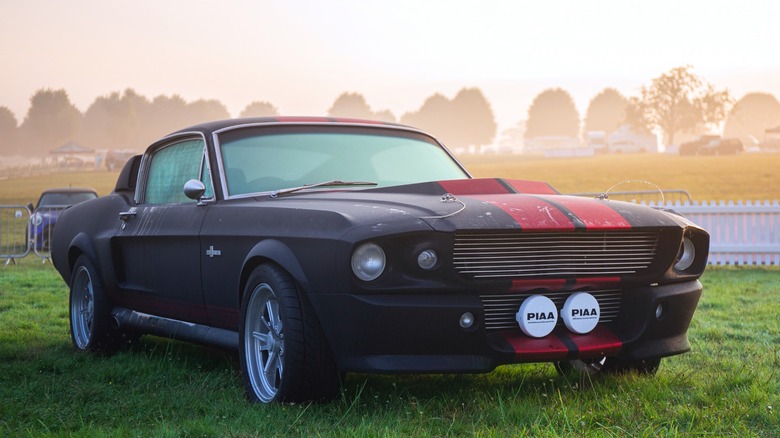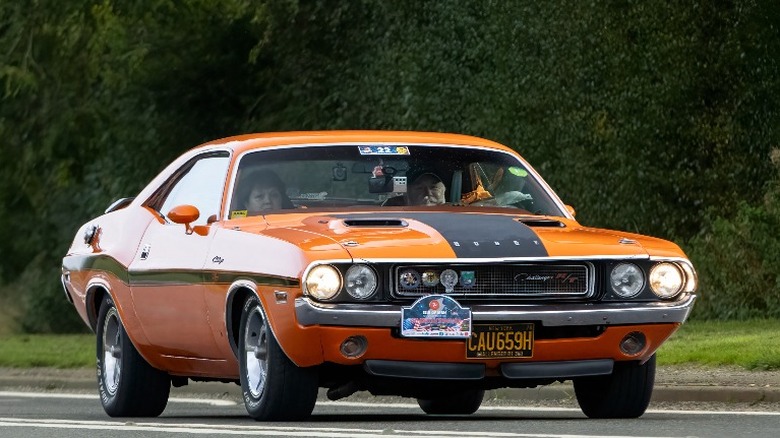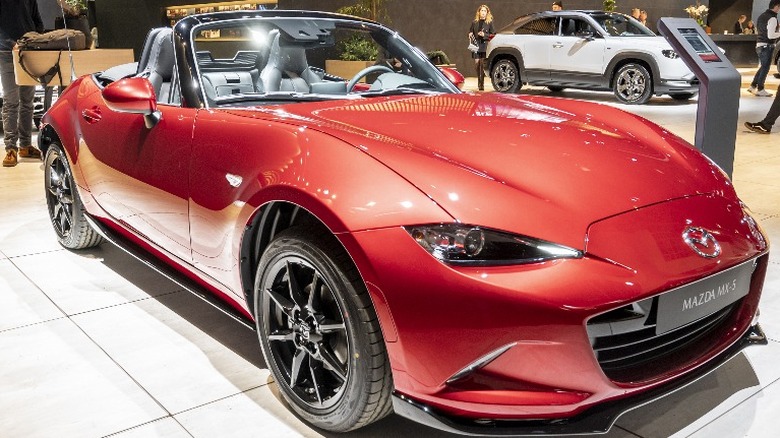Muscle Car Vs Sports Car: What's The Difference?
Modern society loves cars. From the suburbs to winding highways and densely packed cities, our penchant for automobiles is undeniable. To many, cars symbolize unbridled freedom — the liberty to travel wherever and whenever. To others, vehicles are simply convenient tools, allowing us to dart quickly between our homes, jobs, schools, and favorite shopping centers. Regardless of what cars mean to each individual, car culture is deeply enmeshed in our society. Wherever you go, you're likely to encounter a diehard gearhead.
But automobiles are not a monolith. Even within circles of car lovers, enthusiasts differ when it comes to their individual preferences. Of all the various car types and subcategories, perhaps the two most iconic groups are muscle cars and sports cars. Muscle cars and sports cars are basically ubiquitous in our society. They line the screens of our favorite movies and TV shows, fill the garages of famous athletes and celebrities, and capture our hearts and minds as they whizz past us on the interstate. But what exactly is the difference between muscle cars and sports cars? While both types of vehicles are designed for power and speed, they differ in many ways. From engine size and power output to handling and maneuverability, here's what separates muscle cars from sports cars.
What is a muscle car?
Muscle cars are known for producing raw power and lots of torque. The defining features of a muscle car include a large V8 engine, a boxy two-door design, wide tires, and rear-wheel drive. Muscle cars are typically made in the U.S. and are designed for rapid acceleration in a straight line. In contrast to sports cars, muscle cars are heavier, sit higher off the ground, and tend to get poor gas mileage due to their beefy engines.
The first muscle car was the Oldsmobile Rocket 88, introduced in 1949. But when most people think of muscle cars, they tend to envision the classic vehicles of the 1960s and 1970s. Cars like the 1969 Chevrolet Camaro, the 1970 Dodge Challenger, and the 1976 Pontiac Firebird represent muscle car icons. Today, these vehicles are considered classics. They're highly sought-after by collectors and enthusiasts and have served as the inspiration for modern generations of American muscle.
Due to innovation, environmental concerns, and rising insurance rates, muscle cars began to wane in popularity in the late 1970s and early 1980s. However, muscle cars never truly went out of style. As mentioned, American classics like the Camaro and Firebird remain highly prized in the world of gearheads, while contemporary muscle cars, like the new-generation Dodge Challenger and Mustang GT, and even SUVs like the Dodge Durango SRT, have brought the muscle car spirit into the modern world.
What is a sports car?
Sports cars are sleek, lightweight, and speedy. In comparison to muscle cars, sports cars are significantly smaller, sit closer to the ground, and have smaller — though not necessarily less powerful — engines. Most sports cars have four-cylinder engines, and many modern sports cars are equipped with a turbocharger or supercharger. These vehicles are capable of extremely high speeds without the abysmal fuel economy that comes with large V8 motors. Sports cars are also designed for maneuverability and tight handling. They outperform muscle cars when it comes to taking curves and give drivers an enhanced feeling of control. Most sports cars have two seats. They tend to be all-wheel or rear-wheel drive, but front-wheel drive sports cars exist, while the engine can be rear-, front-, or mid-mounted.
The first sports car was the 1914 Vauxhall 25hp 'Prince Henry' Sports Torpedo, but one of the most famous early sports cars still recognizable today is the Chevrolet Corvette. Some of the most popular modern sports cars include the Mazda MX-5 Miata, Porsche 911 Carrera, and Jaguar F-Type.


